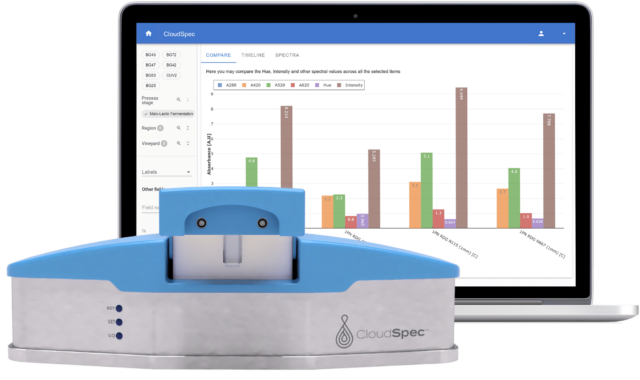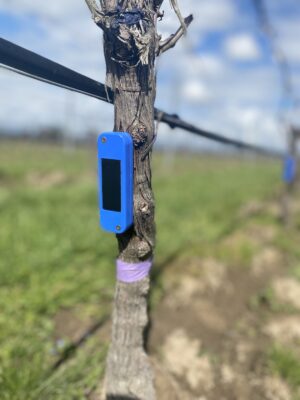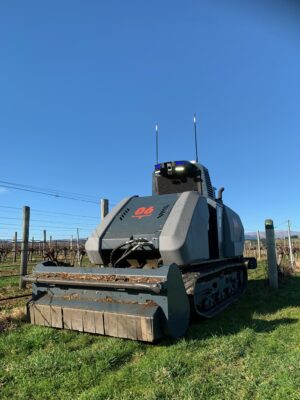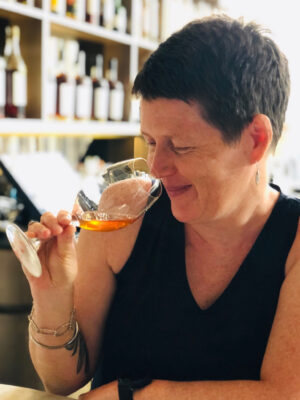Here are three innovations currently making an impact on both sides of the globe.
By Simone Madden-Grey
New Zealand has an established reputation for innovation and quality wine production, so it should be no surprise that technology developed in this small country is finding a home on the west coast of the United States. Here are three innovations currently making an impact on both sides of the globe.
Color and phenolic analysis

Invented by Dr. Brendan Darby, Dr. Matthias Meyer and Prof. Eric Le Ru at Marama Labs in Wellington, NZ, the CloudSpec device uses groundbreaking science to complete optical measurements with cloudy liquid samples — an impossibility, until now. Several unique design features enable the CloudSpec spectrophotometer to, in Darby’s words, “remove the background noise, like hearing a whisper in a nightclub.”
An additional chamber with a highly reflective surface recycles light multiple times before it exits the sphere, after which only the absorption of the sample is measured. This facilitates measurement of cloudy liquids and removes the need for sample clarification or centrifugation. A CloudSpec measurement can also be obtained in approximately 10 seconds, as opposed to the standard 10 or more minutes.
A recent collaboration with the New Zealand Institute for Plant and Food Research and Bragato Research Institute compared traditional spectroscopic methods with the CloudSpec device and concluded CloudSpec was “particularly useful when attempting to develop rapid color measurements for grape berries.”

A pilot grape berry phenolic analysis method was also successfully developed to shortcut the centrifugation, acidification and sample dilution steps in the reference Australian Wine Research Institute (AWRI) method.
The device has been adopted by several wineries and for John Kavanagh, chief winemaker at Foley Family Wines NZ’s Te Kairanga in Martinborough, “The benefit over time will be a better understanding of the characters that produce great and long lasting wines of individual character and expression of place.”
The device’s accompanying software package provides visualization tools from vineyard to bottle, internal benchmarking and market comparisons. Darby describes CloudSpec as a powerful tool to support evidence-based decision making earlier in the production process. CloudSpec is currently being rolled out in the United States and future plans include developing the business here and in other global markets.
Water optimization

New technology optimizing water use has been developed by New Zealand company, Croptide. Described as “a smartwatch for plants” and designed to scale easily, the lightweight sensor fits to individual vines to measure water potential. Early prototypes were refined during trials at vineyards in Hawke’s Bay and Marlborough and today’s sensor is easily installed, fully enclosed and solar powered. A software platform complements the sensors to capture, analyze and present data in an informative and practical way.
In Napa, Calif., Cecelia Buckenham Baines, viticulture manager at Pernod Ricard Winemakers, says of working with Croptide, “Using water effectively and efficiently is particularly important in a drought-prone region such as California. We’re currently in the midst of a ‘mega-drought,’ which makes water use even more front of mind.”
Fully autonomous tractor
In Marlborough, the world’s first fully autonomous multitasking vineyard tractor, Oxin, has been developed by Smart Machine, in conjunction with Pernod Ricard Winemakers. Smart Machine CEO Andrew Kersley says the goal is to develop fleets of machines that can be managed by a single operator and fitted with systems capable of implementing multiple tasks during a single row pass.

Kersley sees Oxin as one way to address labor shortages and improve efficiency and safety, while at the same time reducing environmental impact. The one-to-many operation model shifts operator engagement from repetitive navigation of rows to fleet management, observation of vines, assessment of risks, infrastructure, hazards and logistics.
The design of Oxin machines starts with tracks replacing tires, which reduces soil compaction to less than that of a human foot. Camera systems, GPS and lidar (3D scanning) guide the machines down each row. A combination of hydraulically and electric-powered implements on the machines are capable of carrying out various tasks such as trimming, leaf defoliation, mowing and mulching simultaneously.
The transfer of data from the technology on the ground to backend business systems also supports planning and reporting. “It’s important, as a technology company, that we provide tools that growers can integrate into an ecosystem of other tools and technology in a way that works for them,” says Kersley.
Active partnerships with new technology not only underpin the ingenuity of the New Zealand wine industry, it’s also beneficial for global quality wine production and industry longevity.
_______________________________________________________________________

Simone Madden-Grey
Based in Melbourne, Australia, Simone Madden-Grey writes about the people, places and stories she has discovered on her travels. Her portfolio can be found at happywinewoman.com, including articles on climate and sustainability in the wine industry, as well as the wines, regions and gourmet destinations of Australia and her home country, New Zealand.

















